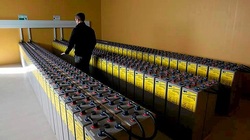|
I just cashed out my Ohmconnect account ----> $41 in my pocket! I love what Ohmconnect is doing. Ohmconnect pays you for participating in demand response events by selling your demand response action into the California energy market, and you get a part of the market price. As demand for electricity rises, a dirtier power plant will turn on to meet the growing electricity need, so demand response can prevent dirty plants from turning on. It's a win-win-win. Sign up with my referral code OHM17582! They also have this cool map which shows you which power plants are powering your home. Last week, Young Professionals in Energy Bay Area hosted a wonderful panel on Building a Software Business in Smart Grid at Morrison & Foerster.
The takeaways were: 1. Say no to VCs - since they'll be after you each quarter about performance 2. Don't try and sell to utilities - Utilities are slow moving and dependent on the regulatory cycle. 3. IT will torpedo your idea - Convincing the IT department of any company is crucial. 4. Go overseas - Markets overseas can be more open to smart gird technology because electricity is more expensive or countries are building out their grid for the first time. Thank you to all the panelists and YPE for putting on the event. It was part of a 3-event series, so see you at the next one!  Arizona substation attacked with bomb - A very different event than the attack on PG&E's Metcalf substation in 2012. Storage Is the New Solar: Will Batteries and PV Create an Unstoppable Hybrid Force? Ohio freezes renewables, efficiency mandates until 2017 Elon Musk opens up all of Tesla Motors' patents - Who wants to see what they can build? Energy Quote of the Day: ‘It’s the Kim Kardashian of Carbon’ At first glance, the proposed EPA regulation seems straight forward: 30% reduction in carbon intensity of the electricity industry by 2030 compared to 2005 levels. However, the compliance targets vary widely from state to state.
"The intensity-reduction targets range from 72% in Washington State to 11% in North Dakota The reductions would take place between EPA’s base measurement year of 2012 and the proposed full-compliance deadline of 2030. Neither the timeline of these state goals (2012-2030, vs. 2005-2030) nor the metric being used (measure of CO2 intensity usage vs. total CO2 volume reduction) match." wrote Bloomberg New Energy Finance in a white paper which explains the complexities. There are also the legal issues. The Clean Power Plan regulates a network of electricity matters in states when up until now, the EPA only regulated individual emission points/individual plants. It is likely that states and electricity generating companies will challenge the ability of the EPA to enforce regulations this way. States will also challenge the varied emissions targets, accusing the EPA of unequal treatment. Yes, the EPA is treating each state separately, but only after taking into account the measures and abilities of each state. Washington state's reduction target of 72% is partly based on the expectation that TransAlta’s 1,460MW Centralia, WA, coal plant will be decommissioned between 2020 and 2030, an EPA official said during a background briefing for reporters and analysts. Other states have less aggressive targets because they may have limited access to new, cleaner natural gas plants. The proposed rule considers four (4) building blocks in reducing carbon intensity (lbs CO2/MWh).
30-35 states are likely to start on their implementation plan this summer for compliance as planned. That leaves 15-20 states to challenge the regulation in courts. Legal issues related to the Clean Power Plain will be resolved by 2018, a mere two years before aggressive targets need to be met. Since states are allowed to partner with other states to reach targets, analysts expect the regulation to result in a default national cost of carbon. California and RGGI, the East Coast's cap and trade program, are likely to be models for other states to follow. California's GHG and CO2 programs will need to be restructured so that electricity generation can be measured independently of other carbon reduction measures across the state. RGGI will require fewer modifications. All views expressed here are for the purpose of meaningful dialogue and are solely my opinion. |
Stay in touch. I send out an email once in awhile.
Archives
April 2024
Categories
All
|





 RSS Feed
RSS Feed